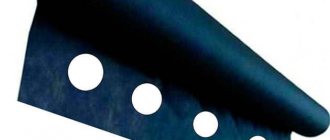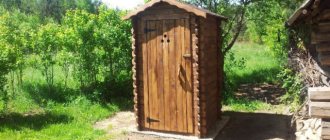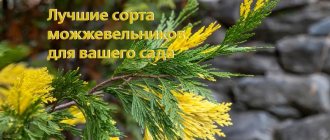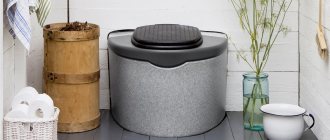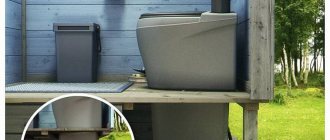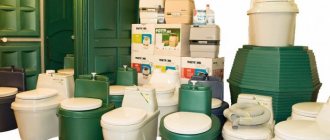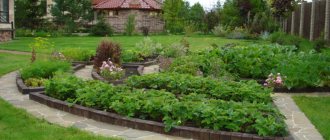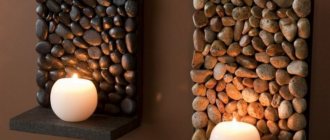The main negative aspect of gardening and agriculture in the spring is changeable weather conditions. The most common type of bad impact on crops is unpredictable frosts. If you do not provide your lands with reliable protection, the crop will die or lose its fruitful properties. A pressing question arises: how to protect your harvest from the vagaries of nature? Many gardeners and agronomists use specialized protective coverings to solve this problem. They allow you to organize an acceptable microclimate under the film. This not only protects against frost, but also contributes to the accelerated development of land under normal conditions. One of such covering materials is Agrospan.
Marking: 17, 30, 42, 60, 90, 110, mulch.
- Agrospan 17 is the thinnest type of covering material; it usually spreads directly onto the ground with seeds sown in it. Promotes their germination, protects them from pests and other harmful influences, and regulates the flow of ultraviolet rays. The recommended protection range is -2...-3 degrees, if used in two layers, the temperature range reaches -7 degrees;
- Agrospan 30 is in high demand. Like Agrospan 17, it is used, as a rule, on a frameless basis (not necessarily), but is an extremely durable material. Temperature stability range is from -5 to -7 degrees;
- Agrospan 42 - used by gardeners to organize frame shelters for land. Very dense material allows you to protect plants not only from temperature changes, but also from the effects of cold winds at temperatures down to -8 degrees.
- Agrospan 60,90,110 are the densest covering materials in the proposed line. They are produced for larger frame structures than Agrospan 42 (covering greenhouses, tensioning the greenhouse frame). Can easily withstand temperatures down to -9 degrees, resistant to cold winds;
- Agrospan mulch is a covering material that differs from others in its black color due to the presence of carbon in its composition. Placed on the ground. As a rule, the film is placed on the garden bed throughout the entire season. For convenient operation, holes are made in the canvas for planted plants, usually strawberry bushes. The mulching process negatively affects the growth and development of weed plants and does not allow the soil to harden (maintaining looseness). Subsequently, the use of mulch revealed that during this process, cultivated plants reproduce a larger number of adventitious shoots.
Properties of agrofibre
Nonwoven fabric sizes vary widely. The thickness of spunbond is the most important performance characteristic on which the scope of its use depends.
The industry produces material with indicators from 10 to 600 g/m2 (the thickness, strength and density of the material are indirectly determined in these units of measurement). For agricultural needs, as a rule, agrofibre is used with an indirect thickness indicator from 17 to 60 g/m2.
Spunbond is produced in rolls up to 4 m wide. In the agro-industrial complex, the most common material is 3.2 m wide. At the same time, agrotextiles can be easily cut, and manufacturers can optionally cut the material according to customer patterns.
Manufacturers of Agrospan, having studied the needs of domestic farmers, made it more resistant to atmospheric influences, thereby increasing its service life to 5 years.
Agrospan is a covering material whose characteristics correspond to an environmentally friendly material. It is durable, lightweight, and has sufficient capacity for water, air and sunlight. To make it immune to increased solar radiation and make it suitable for use in high altitude conditions, the AGROLITE UV stabilizer is added to the fabric composition.
It is simply impossible to answer the question of which material is better. Each material must be used where it is more effective or shelters can be combined. Don't get hung up on film or spunbond. They have different properties that can be wisely used for the benefit of plants.
If you come to the dacha only on weekends, then the film will not work. The plants underneath will simply cook if they are not opened during the day. Agrofibre is preferable in this case. Of course, plants under film develop faster at first than under spunbond, but later they level out in growth.
Spunbond allows moisture to pass through itself, so there is no need to open the plantings when watering. This significantly saves the summer resident’s time. Leaves coming into contact with agrofibre will not rot and die. However, spunbond is not suitable for use as a roof, for example, when covering grapes or tomatoes.
The beds warm up faster under the film, which means it’s worth covering the greenhouse with film. To maintain a comfortable temperature inside, we use spunbond stretched over arcs or simply cover the plants with it on top. After all, if you don’t throw a film over vegetative plants, they will suffocate and burn.
To protect open ground plants from precipitation, and greenhouse crops from overheating, we make the roof with film and cover the sides with agrofibre. This way the greenhouse will be ventilated without constant human intervention.
The non-woven material has a polymer base. Under the influence of high temperatures, polypropylene is separated into fibers, from which they are later woven into a continuous fiber. Light stabilizers provide additional strength to synthetic fiber. They provide the material with resistance to direct sunlight. The fabric does not melt at high temperatures and tolerates severe frosts and significant temperature changes equally well.
Spunbond production
The scope of application of the material depends on its technical characteristics. The main indicator of spunbond is the density of the fabric. The bulk of the material offered by manufacturers is produced in densities from 15 to 600 g/m2.
Types of spunbond
The technical characteristics of synthetic fabric are determined by its manufacturers. All types of canvas are divided into 3 main groups:
- Agrotextiles. A special feature of the material is its treatment with photostabilizers. The main application is agriculture.
- Colored spunbond. High strength fabric. Used for making household products.
- Laminated spunbond. The most durable fabric. It has good air and water resistance. Widely used for medical purposes.
White spunbond
The covering material produced by manufacturers has different colors. It serves as a guide for buyers. Each color of the canvas corresponds to a certain set of characteristics. In agricultural production, covering material is used that is colored: white, black or two-color. Other most common colors include:
- black and yellow;
- black and white;
- white-red.
White canvases transmit the sun's rays better than all other types of material. Black spunbond is used in cases where it is necessary to slow down plant growth.
Table 1. Methods of using white spunbond.
| Density of fabric, g/sq.m | Purpose |
| 17 | The canvas is used to protect plants from bad weather. The material allows moisture and sunlight to pass through well and does not interfere with the growth of young shoots. |
| 30 | The fabric is designed to protect plants from spring frosts and hail. |
| 42 | Arc-shaped greenhouses and greenhouses are covered with canvas in the spring. |
| 60 | The material is good for covering greenhouses and greenhouses in areas with harsh climates and frequent frosts. It is good for them to wrap the roots of trees and shrubs for the winter, the planting of which is planned in the spring. |
Spunbond
Table 2. Methods of using black spunbond.
| Density of fabric, g/sq.m. | Purpose |
| 50 | The material covers the beds to quickly warm the soil, suppress weeds and isolate the fruits of low-growing plants from the soil. |
| 60 | Protects plants from severe spring frosts. |
READ MORE: Pull-out mechanisms in a kitchen corner cabinet 28 photos features of a kitchen carousel types of pull-out systems How to choose hinges and other fittings
Colored two-layer material replaces mulch. Foil fabric accelerates plant growth, and reinforced fabric covers greenhouses.
White spunbond covering material
The advantages of the canvas include:
- transparency of the material;
- high degree of strength;
- the service life of the covering material is at least 3 years;
- possibility of use at temperatures from -60 to 90 degrees;
- light weight;
- environmental Safety.
How to choose the right film?
The covering fabric is selected depending on what types of plants the agronomist wants to protect from external influences. To cover small shrubs, ground berries, fruits, flowers, vegetables and various ornamental plants, density markings 17 and 30 are suitable. If you need to build a small greenhouse to ensure a comfortable wintering of plants, you should use fiber markings 42 and 60.
Bandwidth.
If a person’s priority is to have sufficient light equipment, it is worth choosing agrofibre of lower density. A film with a density of 17 grams per square meter transmits 80% of light rays, and a denser one 60 grams per square meter. only 65%.
Also, a canvas of lower density is suitable for seekers who want to protect fragile plant species; the lighter the weight, the easier it is to lift it without harming the development of the tuber.
For adaptive protection from frost, it is logical to use denser fiber, but some gardeners solve this problem more simply - by pairing lighter types of agrofibre. This method, unfortunately, is not reliable.
Fiber selection examples.
1.Task. It is necessary to build a tunnel greenhouse to grow a light-loving plant.
Solution. Choice of fabric with a density of 30 or 42 g/sq.m.
Note. In this situation, agrofibre with a lower density (17 g/sq.m) will not be suitable, because it is necessary to build a frame structure (the structure will be unreliable). Denser fabrics (60 g/sq.m. and higher) are not suitable due to low light transmittance. The optimal solution would be to choose a medium-density film.
2.Task. You are going to grow strawberries in large quantities, but want to get rid of the weeds without using chemicals to kill them.
Solution. Selecting a mulch fabric with a density of 60 g/sq.m.
Note. In this situation, a fiber adapted for weed control is suitable for you; it does not negatively affect cultivated plants (special holes are made in the fabric for them), however, weeds will not be able to develop under a film with such a density.
In addition to choosing spunbond based on density and directionality, it is important to pay attention to reviews of the leading manufacturer and use only products from reliable suppliers.
Application of covering material.
Non-woven products are not limited to use only in the field of agronomy. They are used in the construction of roofs (fixed to formwork, covering the insulation), insulating wooden structures, filtration, and more. The purpose of the fiber is protection from wind gusts, evaporation, protection from precipitation, and thermoregulation. This fact confirms the reliability of the presented material.
Spunbond is used in medicine and other industries; it is used to make disposable clothing for special purposes, due to its cost and practicality. It is possible to introduce additives to reduce static electricity.
Using covering materials, a protective surface is produced in the furniture industry (separating the filler from the upholstery).
Low-density spunbond is also used in the production of hygiene products (diapers, feminine pads, disposable diapers). In this application, the fiber is treated with antimicrobial additives.
What to look for when choosing spunbond
The choice of covering material depends on the intended scope of its use. Open ground, hotbeds and greenhouses are covered with white non-woven material. Red-white fabric has the best properties for protecting plants from precipitation. Black material is ideal for mulching.
Spunbond price components
Advantages of using Agrospan.
Covering material replaced polyethylene film in the 1980s. Its main advantages over its polyethylene counterpart are maintaining a microclimate, temperature balance, and allowing air masses to pass through. The main difference between these materials is the variability of temperature balance: polyethylene does not protect well from cold weather, and on hot days you can simply kill plants if you do not open the film slightly (to allow air in). Agrospan is needed to maintain an almost constant temperature balance under the canvas, which is a plus.
Agrospan is not subject to physical deformation, increased breaking load (even a canvas with a density of 17 g/sq.m. cannot be torn without a sharp tool). This material does not rot or mold, and is adapted to thermal changes.
Advantage over competitors.
The main advantage of Agrospan over non-woven fabrics from other companies is the use of high-quality threads and the Agrolight stabilizer (service life reaches more than 5 years), an expanded range of densities (7 options).
Care and storage
Fine particles of dry soil are transported by the wind along with bacteria, viruses and mycelium and become clogged between the fibers of the fabric. As a result, its breathability may decrease over time.
In order for agrofibre to serve for many years and not become a source of plant infection with fungal diseases, you need to know the basic rules for caring for it:
- Dust accumulation can be removed with a special soft brush or broom.
- Pronounced stains are removed using an automatic washing machine in a delicate mode without spinning.
- Small stains and streaks can be removed using a damp cloth and detergent.
- A good disinfectant effect can be had by rinsing the fabric in a weak solution of manganese or fungicide.
- To prevent the material from losing its physical and mechanical properties, it must be stored in a dry place, where it is carefully folded after being washed and dried.
Agrotextiles tend to tear when exposed to sharp or rough metal objects for a long time. During installation, it is necessary to use protective layers in places of greatest friction and fastening. To do this, use any thick fabric or thin wooden strip.
How is it used in the agricultural industry?
- Used to cover greenhouses and greenhouses. It is necessary to install arcs for the stability of the frame structure and mark the boundaries. Using special clamps, secure the covering material to the arcs of the greenhouse or greenhouse. Make sure that the work is done efficiently and airtightly;
- To cover both small and large volumes of strawberries and other agricultural crops with Agrospan mulch. You need to figure out which side to put the covering material on. For strawberries, you need to lay the fiber on the ground with the pimpled side down. If you have difficulty finding the pimpled side, you can use an experimental method - you need to pour water on both sides. The side that allows more water to pass through is pimply.
Agrospan covering material is used by a large number of gardeners and agronomists, and is the leading manufacturer of agrofibers in Russia. All thanks to high-quality production and a wide range of products by density. I hope this article was useful to you.
Pricing for spunbond
More than 100 enterprises are engaged in the production of spunbond. Most of them produce products according to specifications. The pioneer of domestic sponbond production is Sibur-Geotextile LLC. The company has been operating in the synthetic materials market since 1997. Other largest Russian manufacturers include: ZAO Polimatiz, LLC Avgol Ros, ZAO Regent Nonwoven Materials. Among the objective factors that influence the retail price of materials they form:
- density of agrofabric or geotextile;
- chemical composition;
- sizes.
The selling price of spunbond starts at 50 rubles/m.
Spunbond
